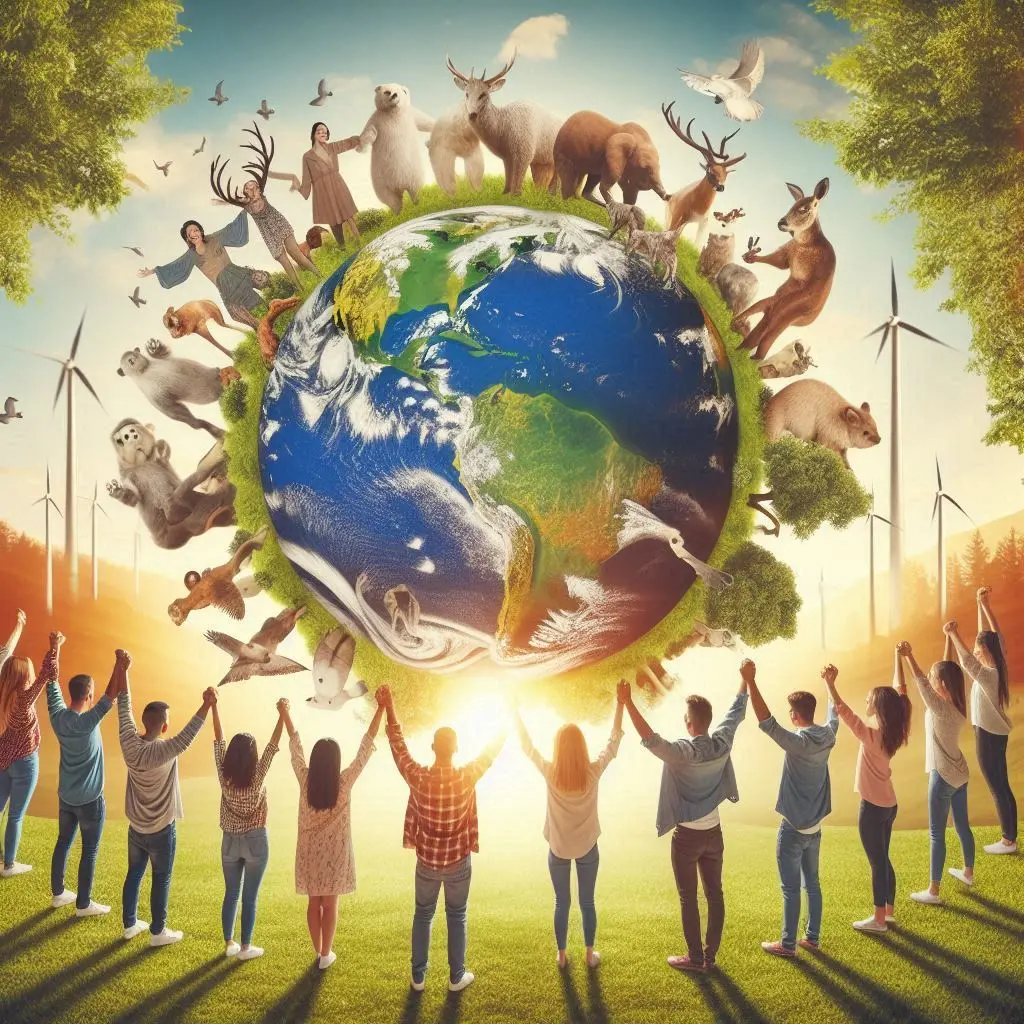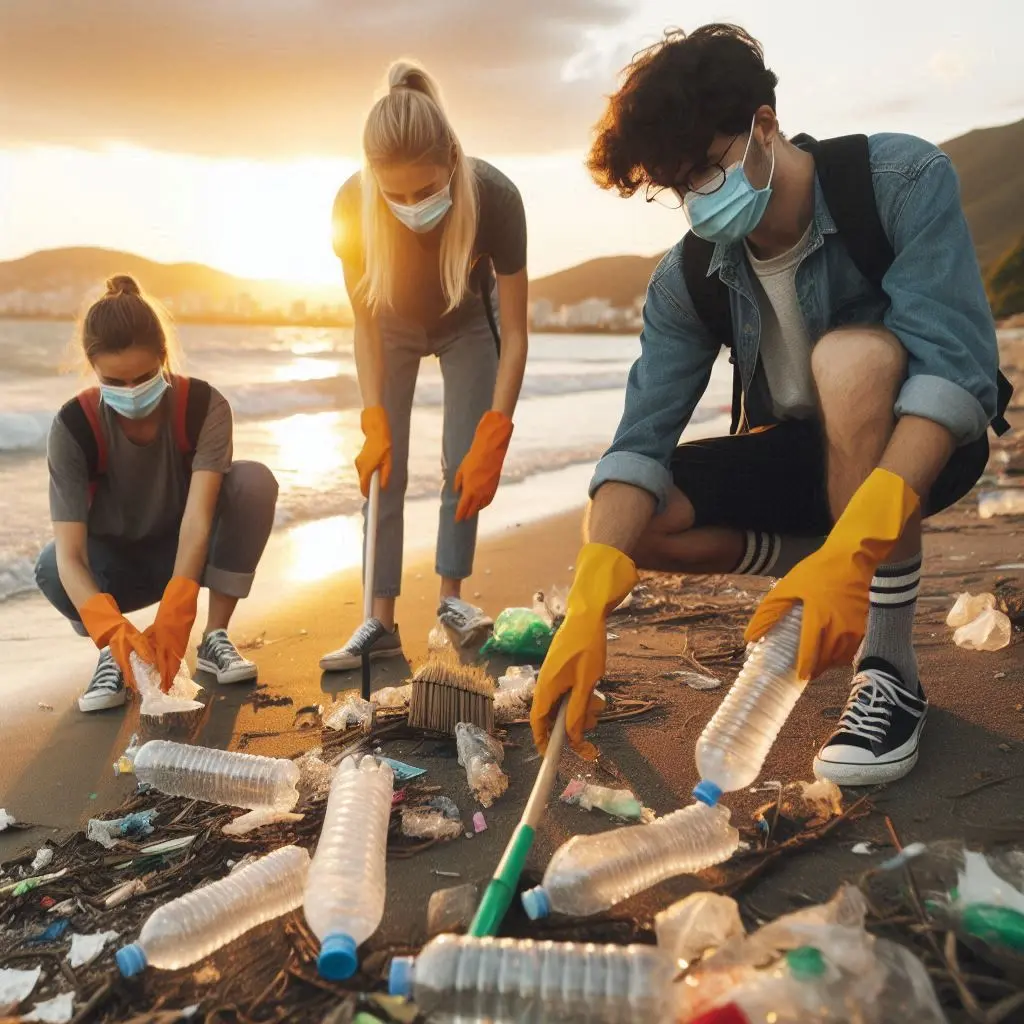Save Earth, Save Environment: A Call to Action
In the face of escalating ecological crises, the call to preserve our planet has never been more urgent. From global warming to species extinction, the challenges are immense, but so are the opportunities for positive change.
This article delves into the multifaceted efforts required to save Earth and protect our environment, emphasizing the need for collective action and individual responsibility.
"The Earth is what we all have in common." - Wendell Berry

Key Takeaways
- Climate Change: Urgent action is needed to reduce greenhouse gas emissions and transition to renewable energy sources.
- Biodiversity: Protecting biodiversity is essential for ecosystem health and human well-being.
- Pollution: Reducing pollution requires strict regulations, sustainable practices, and public awareness.
- Deforestation: Combating deforestation involves reforestation, sustainable forestry, and policy advocacy.
- Overconsumption: Sustainable consumption and production are crucial for reducing our ecological footprint.
The State of Our Planet
The current state of our planet is alarming. Climate change, driven by human activities, is causing unprecedented shifts in weather patterns, rising sea levels, and increasing the frequency of extreme weather events. Biodiversity is declining at an alarming rate, with many species facing extinction. Pollution, deforestation, and overconsumption of resources are further exacerbating these issues.
| Environmental Issue | Impact |
|---|---|
| Climate Change | Rising temperatures, sea level rise, extreme weather events |
| Biodiversity Loss | Extinction of species, loss of ecosystems |
| Pollution | Air and water contamination, health hazards |
| Deforestation | Habitat loss, carbon emissions |
| Overconsumption | Resource depletion, waste generation |
Climate Change: The Defining Issue of Our Time
Climate change is arguably the most pressing environmental issue we face today. The burning of fossil fuels, deforestation, and industrial activities have led to an increase in greenhouse gases, trapping heat in the atmosphere and causing global temperatures to rise. This phenomenon, known as global warming, has far-reaching consequences.
Key Actions to Combat Climate Change:
- Reduce Carbon Footprint: Shift to renewable energy sources like solar and wind power. Reduce reliance on fossil fuels by promoting energy efficiency and conservation.
- Promote Sustainable Transportation: Encourage the use of public transportation, cycling, and walking. Invest in electric vehicles and infrastructure.
- Enhance Carbon Sequestration: Protect and restore forests, wetlands, and other natural carbon sinks. Implement sustainable agricultural practices.
"We do not inherit the Earth from our ancestors; we borrow it from our children." - Native American Proverb
Biodiversity: The Web of Life
For ecosystems to be resilient and stable, diversity—the variety of species on Earth—is necessary. Unfortunately, extinction rates of species are rising alarmingly due to human activities including habitat degradation, pollution, and overexploitation. The maintenance of ecosystem services that promote human well-being depends on biodiversity protection.
Strategies to Protect Biodiversity:
- Conservation Efforts: Establish and manage protected areas, wildlife reserves, and national parks. Support conservation organizations and initiatives.
- Sustainable Practices: Promote sustainable agriculture, forestry, and fishing practices. Reduce habitat destruction and fragmentation.
- Combat Invasive Species: Implement measures to prevent the introduction and spread of invasive species that threaten native ecosystems.

Examples of Endangered Species and Their Conservation Status
| Species | Conservation Status |
|---|---|
| Amur Leopard | Critically Endangered |
| Javan Rhino | Critically Endangered |
| Vaquita | Critically Endangered |
| Mountain Gorilla | Endangered |
| Asian Elephant | Endangered |
Pollution: A Global Menace
A serious risk to both the environment and public health is pollution in all of its manifestations. Climate change and respiratory illnesses are exacerbated by air pollution from automobile exhaust and industrial pollutants. A contaminated water body affects both human populations and aquatic life. It is caused by industrial waste, plastic trash, and agricultural runoff.
Measures to Reduce Pollution:
- Regulate Emissions: Implement and enforce strict regulations on industrial emissions and vehicle exhaust. Promote cleaner production technologies.
- Waste Management: Enhance waste collection, recycling, and disposal systems. Reduce plastic use and promote biodegradable alternatives.
- Clean Water Initiatives: Protect water sources from contamination. Implement sustainable agricultural practices to reduce runoff.

"The environment is where we all meet; where we all have a mutual interest; it is the one thing all of us share." - Lady Bird Johnson
Deforestation: The Silent Crisis
Loss of biodiversity and climate change are mostly caused by deforestation, or the widespread removal of forests. Forests absorb atmospheric carbon dioxide by acting as carbon sinks. Innumerable creatures find home in them, and they support the livelihoods of millions of humans.
Actions to Combat Deforestation:
- Reforestation and Afforestation: Plant trees and restore degraded lands. Support community-based forestry initiatives.
- Sustainable Forestry: Promote sustainable logging practices and certification schemes. Reduce demand for products that drive deforestation, such as palm oil and soy.
- Policy and Legislation: Advocate for policies and laws that protect forests and promote sustainable land use.

Overconsumption: The Root of Environmental Degradation
One of the main causes of environmental deterioration is excessive resource usage. The increased demand for raw resources, energy, and water is causing resource depletion and environmental damage. Cutting our ecological footprint requires sustainable manufacturing and consumption.
Steps to Promote Sustainable Consumption:
- Reduce, Reuse, Recycle: Adopt the three R’s to minimize waste and conserve resources. Support circular economy initiatives.
- Sustainable Products: Choose products with minimal environmental impact. Support companies that prioritize sustainability.
- Consumer Awareness: Educate consumers about the environmental impact of their choices. Promote responsible consumption patterns.
Bullet Points: Simple Actions to Save the Environment
- Conserve water by fixing leaks and using water-efficient appliances.
- Reduce energy consumption by using energy-efficient lighting and appliances.
- Use public transportation, cycle, or walk instead of driving.
- Reduce plastic use by opting for reusable bags, bottles, and containers.
- Support local and sustainable food producers.
- Participate in community clean-up events.
- Advocate for environmental policies and regulations.
Conclusion
Saving Earth and protecting the environment is a collective responsibility that requires concerted efforts from individuals, communities, governments, and businesses.
We can make a big difference by using safe methods, supporting environmental laws, and spreading knowledge. Wendell Berry said it best: "The Earth is what we all share." Let's work together to keep it safe for future generations.